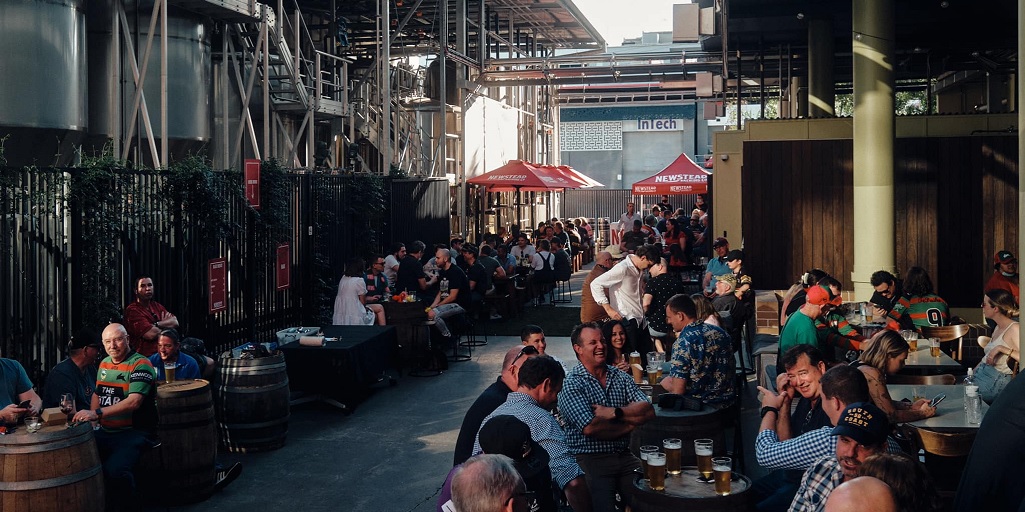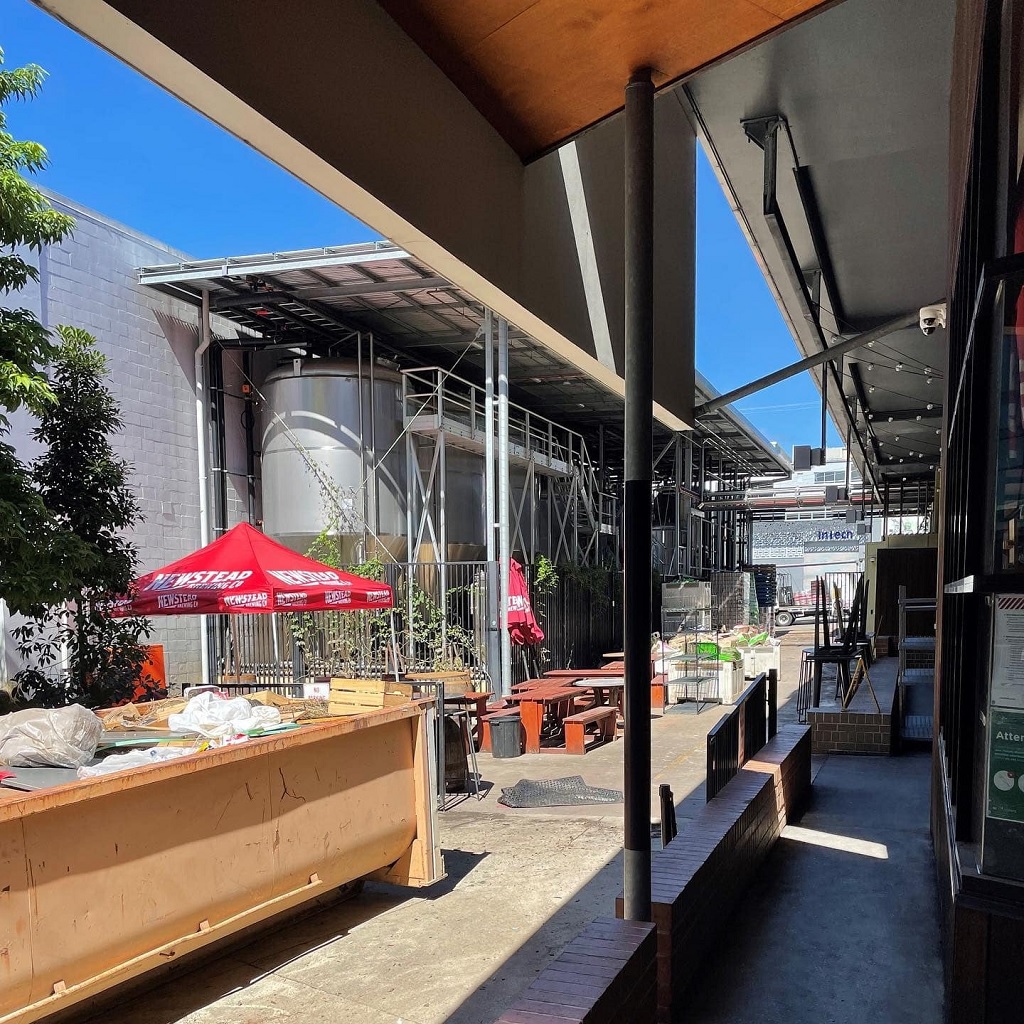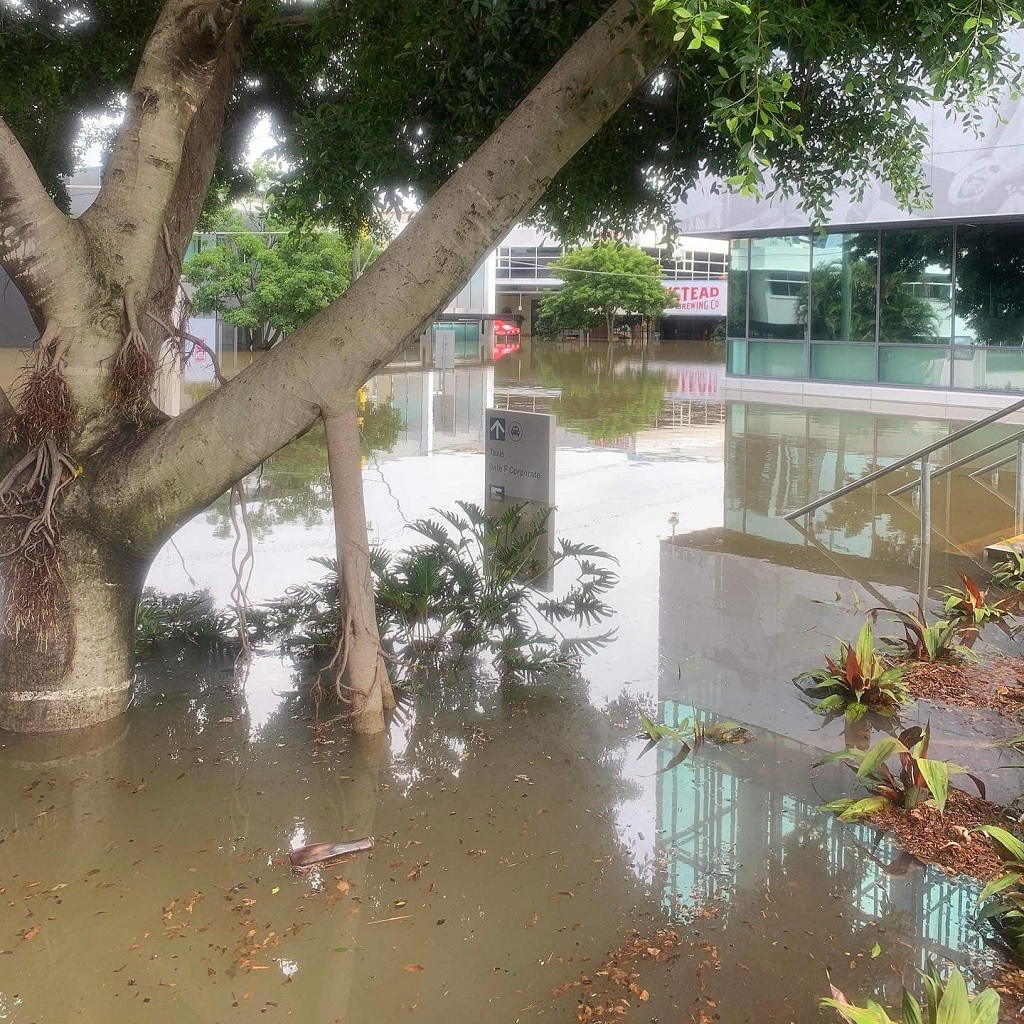
Disaster-proofing on the agenda as Newstead brewing pauses

Newstead opened pop up bars at Milton following the flooding
This year’s flooding in South East Queensland and New South Wales as well as 2020’s bushfires and the promise of more extreme weather as climate change takes hold has focused attention on disaster-proofing the brewery.
While some breweries were out of action for a short time,Brisbane’s Newstead Brewing Co. was hit badly by the flooding. Its Milton brewing operations are now out of action for the foreseeable future – potentially for several months as refurbishments get underway.
Marcus Cox, head brewer at Newstead Brewing Co., said that while they were not inundated with river water as the area had been in 2011, the incoming rain which caused the April floods took its toll on the site.
“Looking at the business in three different components, the bar element is starting to come back online, but the kitchen is stripped bare, we’re getting new floor and all equipment will have to be new.
“But the brewery is worth so much more than the kitchen, relatively speaking. We can’t throw it away, so we’re trying to fix every little valve, everything.
“When you think about how a brewing tank works, there’s a motor and a pump you need that are as close to the ground as possible. They’re all shot and they’re from the US and we need to get them refurbished in Australia so there are extensive lead times.
“It’s a lot of general electronic stuff, and this brewery was retrofitted so it doesn’t have natural drainage. The tanks are all on sumps, they stopped working and blew up, it was far from an ideal situation.
“It doesn’t look that bad, it’s not covered in silt as it’s not river water, but everything is ruined.”
Newstead was of course not the only brewery to be hit hard in the floods, with Two Mates Brewing in Lismore also facing hundreds of thousands of dollars of damage, while Lion’s XXXX brewery and several others were forced to close until clear ups could be completed.
But with weather events like the 2022 flooding expected to occur more frequently in coming years, breweries are looking at ways to protect their tanks and venues from emergencies, and it’s something Newstead is looking at as it rebuilds its Milton site.
“You can’t really prepare for those levels of water, you have to rationalise it to a level. 1.6-1.8m is what we’re interested in, making stuff safe at that level.
“We’re eliminating risk by having stuff moved off the ground, we own the whole building and the first floor is effectively empty, so why were we not storing everything up there – we just didn’t think about it.”
Newstead is also looking at exclusionary practices, barrier protection and modular units to enable quick and efficient extraction of equipment in the event of an emergency.
“Some of the equipment needs to live in the ‘killing zone’ – the tanks are secure, we even managed to get beer out of them – but the control valves are shot and we had to jerry rig them open,” Cox explained.
“Our centrifuge is on the floor, we’re not able to move that anywhere else, so we’re looking at a three-sided construct, and the fourth side slides in to create a box. We might look stupid 99 times out of 100 when we drop the barrier, but might be better than losing $300,000 on a new one.
“Then there’s a whole bunch of stuff to move, and make things more modular, the motors and pumps that have to below, we’ve put them on waterproof quick disconnects, so you can basically pick them up, put them on a pallet and move them away from the threat and we’re extending that practice to some other things.”
But Newstead’s path to recovery will be a long one. It has laid out a plan to reopen fully, including utilising the venue during game days, launching pop-up bars and contract brewing at Ballistic, Brouhaha and Balter, as well as opening its Milton site as a bar only. It has also been able to benefit from keeping its other site on Doggett Street open.
“The pivot to summer starts about now, so those opportunities for contract brewing might dry up and we’re trying to maximise those as best we can, but with beer when we’re back in production it’s still a 3-4 week cycle.
“[The opening of the Newstead site] helps to keep our core staff, but we have had to let casuals and things go – there’s just nothing for them to do.”
But support from the industry including The Great Brown LemonAID event to support flood-impacted breweries, as well as an appearance by Labour Leader Anthony Albanese on the campaign trail has been encouraging, Cox said.
“It’s been great, everyone has their own problems but they have still helped.
“It’s been difficult to communicate to people that this is happening only in some areas and industries, someone less than 1km away from us is still in production. It’s almost topographical, we happen to be a brewery in a ditch and we got screwed.”
For the future, there will be longer-term projects for Newstead to work on, that are relevant to all breweries in potentially flood-affected areas.
“We’re not rebuilding, we’re going from scratch with existing shit in the way – it’s even more challenging than an empty warehouse.
“[In the future] we’ll do proper risks assessments, itemising equipment so we know where everything is. But you need to make a decision, you can’t protect against 20m high but you need to make a call on what you can do,” said Cox.
Emergency planning for breweries
While it is almost impossible to plan for complete protection when faced with floods like those experienced by Queensland and New South Wales brewers this year, there are some things you can do, according to Bespoke Brewing Solutions’ Justin Fox, with learnings from previous extreme weather events such as the 2011 flooding which impacted many people and businesses, including the XXXX brewery.
“The stormwater drains flooded out the whole pack line so when they rebuilt, they built a lot of modular stuff [at XXXX],” he explained.
“Electrical cabinets were on plugs, so they could unplug everything and move them up. All the fillers were upstairs and the cheapest pieces of equipment were downstairs.
“The rest of the brewery can get wet, but there are a lot of electricals down low.”
Fox said that there were some basic things brewers can do to alleviate the impacts of flooding and make sure they can extricate equipment fast in times of crisis, whether it be flood or fire.
“Storage up high, have racking up high. Having electrical up high will protect you, you’ll still have a pump down below, but at least the electrical cabinets might be saved so it will be a cheaper recovery.
“Loose kegs would be an issue, and definitely a risk so be prepared for how you’re going to tie down loose kegs or move them fast.
“Chemical storage is a major issue. It’s a real environmental issue if caustic soda gets out and starts leaching out, that’s one you’d want to be high, because when you start cleaning the water would be acidic – so with flooding the big thing to do is move your chemicals.”
Most important though, Fox said, for any crisis, be it fire, flood or earthquake, breweries should have emergency plans.
“What are you going to do? Are your staff prepared for this? Who have you alerted that you’re all out? Do they know to grab this, lock this, shut all windows, turn off air conditioners and so on?
“You need to know that procedural stuff, what is your plan of action?”






